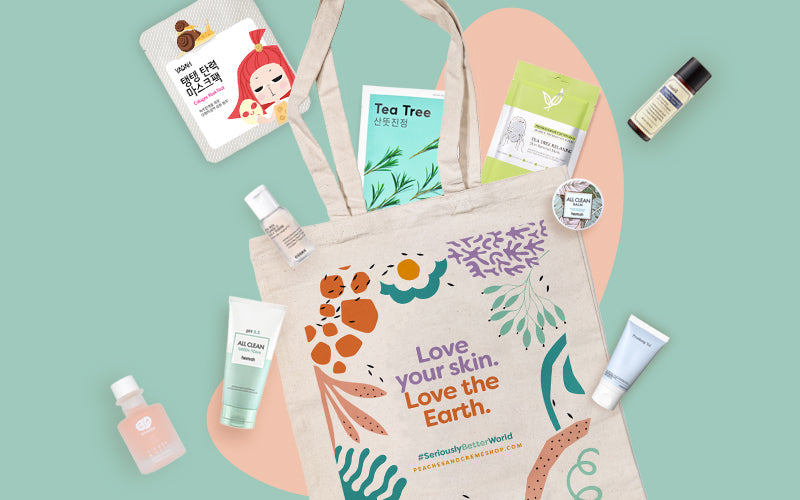SPF Manifesto III: Debunking Sunscreen Myths
Sunscreen is our best friend when it comes to protecting skin against sun damage and UV radiation. Despite how much we benefit from it, however, sunscreen is always under scrutiny and the metaphorical trial because of misconceptions and widespread misinformation.
Let’s clear up the air and defend this hero of sun protection. Join us as we discuss and debunk the most common sunscreen myths.

Myth 1: Sunscreen causes skin cancer.
FALSE 🚨 WRONG 🚨 DANGEROUSLY INCORRECT 🚨
There are many studies and evidence that prove how sunscreen protects your skin from UV radiation—a carcinogen. Refusing to use sun protection increases your risk of getting skin cancer, damages your skin barrier, and causes problems like acne, hyperpigmentation, and premature aging.
Many individuals believe and spread this misconception because of studies where some sunscreen users had a higher risk of getting skin cancer. HOWEVER, the conclusion that it was the sunscreen that caused this danger is false since these individuals were also always out and about in the sun, sunbathing and traveling to sunnier destinations. It was the frequent, drawn-out, and direct exposure to UV radiation that increased their risk of getting skin cancer.
🍑 Learn more about why we love sunscreen, how it protects your skin, and why it helps reduce your risk of skin cancer here.
Myth 2: Sunscreen may not cause cancer but it’s still bad for you.
This myth stems from a study that rocked the boat and put the fear of sunscreens into many people’s hearts: a 2019 clinical trial looking into the amount of sunscreen that is absorbed into your blood. It sounds scary BUT there is more context which explains why the study does not prove that sunscreen is dangerous.
Sunscreen getting into the bloodstream was not a new discovery. The clinical trial was conducted by the US FDA for regulatory purposes, and it was looking into the amount of active ingredients we absorb (more on that below). It was a preliminary study to help regulations and safety assessments in the US.
Most importantly, the study itself says “These results do not indicate that individuals should refrain from the use of sunscreen.”
If you are still concerned about the idea of having trace sunscreen in your body, toxicologists and cosmetic chemists have explained that the amount does not cause harm and is taken into account during safety assessments. The amount also does not build-up into concerning levels over time since sunscreen works by staying on top of your skin, which sheds. In addition, the amount that does get into your body is metabolised and promptly ejected.
Myth 3: Apply chemical sunscreen before everything else.
Some people believe this myth because they think chemical sunscreens need direct contact with skin to work. This is not true, however, as sun protection should always be the last step of your morning skincare routine.
Sunscreen works by forming a shield or film on top of your skin to protect you against UV radiation. If you apply serums, oils, or creams after your sunscreen, you risk disrupting this layer of protection or straight up preventing it from forming.
Myth 4: Sunscreen makes you UV-proof.
Sunscreen is your best shield against UV radiation but it does not give you 100% protection from it. Even if you apply and re-apply your sunscreen consistently, it’s best to avoid sitting under the sun for too long, especially from 10AM to 4PM—hours when UV radiation is at its peak.

Myth 5: You only need a bit of sunscreen for the day.
You need enough product to make sure that you enjoy the full UV protection your sunscreen offers. Getting the exact amount for your face, neck, ears, and nape’s dimensions will require some math. However, skincare professionals and dermatologists alike have also recommended using the following amounts:
- Dime size
- At least 2 fingers’ worth
- ¼ to ½ teaspoon
This is why using makeup or moisturisers with SPF as your sole sun protection is not recommended; you would need a lot to make sure your skin is properly covered.
Myth 6: Mixing other products into your sunscreen improves it.
Mineral sunscreens, with their tone-up and mattifying effects, are often the victims of this misconception. You should not mix in bronzers, foundation, or other pigments into your sunscreen since these products can dilute it and ruin its protection. This is NOT the same as applying makeup over your sunscreen after it dries, which is a-okay.
Avoid mixing in moisturisers as well. If you have dry skin, just apply your moisturiser before putting on sunscreen.
Myth 7: A sunscreen’s SPF value is not important.
SPF or Sun Protection Factor measures how well and how long your sunscreen shields you from UVB radiation. This means that the higher your SPF, the more protected you are. We recommend using sunscreen with SPF 30 to 50 to minimise the risk of skin damage.
🍑 Choose a broad-spectrum sunscreen to protect yourself against both UVA and UVB rays!

Myth 8: Mineral sunscreen is safer thanks to its natural ingredients.
Mineral sunscreens are not safer than chemical sunscreens, especially not because of the “natural” ingredients (titanium dioxide and zinc oxide) used for their UV filters. Yes, these two are natural BUT the ones in your sunscreen are processed and coated to be safely applied to your skin. So, they are not as “natural” as you may think—they are processed chemicals that are safe to use.
Myth 9: DIY sunscreens are safer and perform better.
Good sunscreen is more than just the ingredients you use—it’s about precision, attention to detail, and proper formulation.
Ingredients go through appropriate processing to ensure that they are safe for your skin and effective against UV radiation. Sunscreens are also specially formulated so that UV filters are distributed properly throughout the product, preventing ingredients from settling at the bottom of its packaging. These types of considerations and quality checks are difficult to achieve at home without the proper equipment and professional knowledge. Using sunscreen from reputable brands is simply safer, easier, and guarantees that you get the protection you need.
Myth 10: You only need to apply sunscreen once a day.
We tend to sweat, get oily, and touch or rub our faces throughout the day. These things plus environmental factors poke holes through our sunscreen’s protection. With this, it’s important to re-apply your sunscreen every 2 hours.
You can use a sun stick for re-application if you find liquid sunscreens too messy. For each area of your face, swipe at least 4 times back-and-forth to make sure you are using enough product.
Myth 11: You do not need sunscreen if you have darker skin.
Everyone needs sun protection regardless of colour. Melanin may help reduce the chances of sunburn but it does not give you full immunity to UV radiation and the harm it does to your skin. Safeguard yourself from sun damage by applying sunscreen every day!
☀️🧴☀️
Sunscreen plays a vital role in keeping your skin happy and healthy. There will always be misinformation floating around but as long as you remember to pause, research, and evaluate, you can separate truths from misconceptions. Today, we remind you that it's always okay to be curious and to fact-check what you read online.
Keep glowing, Peaches!









Leave a comment